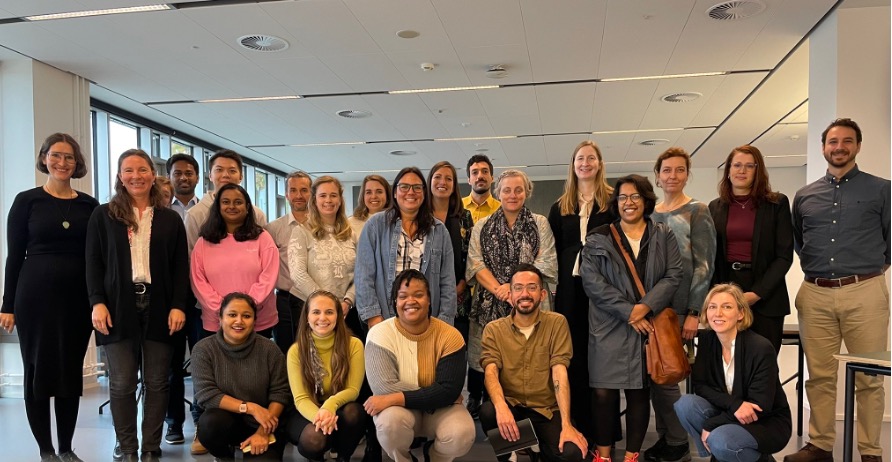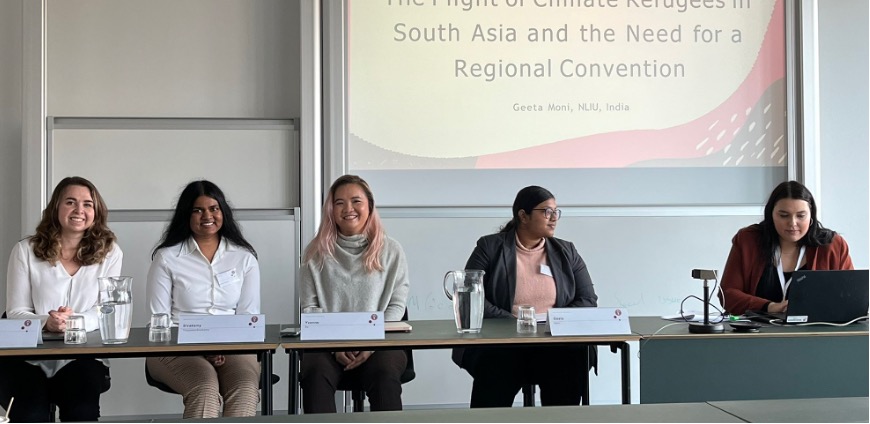Pushing the Boundaries in Disaster Studies: Reflections from the NEEDS 2022 PhD Workshop
This blog post was written by the participant Mhari Gordon, PhD student at UCL-IRDR and first published at the IRDR website.

This month, November 2022, I was fortunate enough to attend and present at the Northern European Emergency and Disaster Studies (NEEDS) Conference as well as participate in the preceding PhD workshop. The PhD workshop was run over a day and a half by Emmanuel Raju, Ksenia Chmutina, and JC Gaillard and attended by 18 PhD students. The workshop was a fantastic experience and great opportunity to meet enthusiastic disaster scholars.
The workshop kicked off with an activity mapping how our PhD research topics connected in terms of key concepts, methodologies, research subjects or objects, and geographical locations. Despite diversity in our research orientations and backgrounds, the mapping exercise highlighted overlaps. For example, many of our studies focus on groups which are under-represented individuals in disaster studies, such as genders beyond the binary, learning challenges, youth, and refugees. We also noticed a trend in using methodologies which sit more on the mixed and qualitative methods side, moving away from large-scale approaches observed in quantitative methods.
Moreover, we recognised and spoke about our experiences of using concepts such as vulnerability, resilience, and intersectionality. Terms which were originally critical ‘western’ concepts that have now turned into mainstream buzzwords and act as blanket and uniform (or universalism) approaches in disaster studies. There is a tension between reclaiming the true heterogeneous nature of such concepts, but also debating the need to move beyond them. Such concepts may not have the same meanings, or even exist, in all cultures and languages. New disaster studies need to be more reflective and critical by expanding out of the previous siloing and labelling as well as welcoming the diversity of cultural contexts. This led to us reflecting on our positionality in studying disasters and how to navigate this in terms of methodologies and sharing our messages with audiences. During the afternoon sessions, we started asking questions such as why is the research being done and who will benefit? We then analysed and critiqued a more extensive set of questions which is outlined in the RADIX Disaster Studies Accord (link).
The second morning was dedicated to publishing in disaster journals. The workshop facilitators and guests, including Christine Eriksen, Rodrigo Mena, Eefje Hendriks, and Ricardo Fuentealba, shared valuable and practical advice. The two key takeaways from the morning were to consider 1) the editors of a journal and 2) the format of publication. As authors of academic publications, we need to critically consider how we can best present and do justice to the messages that we are sharing. This may be in the likes of keeping parts of the text in the original language so that the local context and meaning are not lost in translation or interpreted with western-academic terms and norms. Or the likes of different formats to the standard academic paper such as a comic strip – which will be included in an upcoming issue of the Disaster Prevention and Management Journal (journal link).
The advice shared with the PhD students for publishing in Disaster journals was:
|
Ask colleagues and mentors about their experiences with different journals and seek their advice on which journal they think is most suitable for our manuscript. Read the scope of the journal and if there is still uncertainty about whether our manuscript’s topic fits, then send an email to the editor(s) asking for their advice before formally submitting. Look at which journals our citations and references, as well as scholars with similar research interests, have published in. This will give one an initial indication of the type of work which is accepted by the journal. Editors can usually tell by the title and first few sentences of the manuscript whether it will be accepted for peer review or not – so our manuscript needs to be convincing from the start. Do not panic if it is taking a few months between the manuscript being accepted for review and receiving feedback. It can take time to find appropriate and willing reviewers and for them to review the manuscript. There are also unexpected delays or interruptions during this process. Finally, if the authenticity of the research and manuscript does not match the standardised format but fits within the scope of a journal, then we should not hesitate to contact the editor(s) to see if they are willing and able to find a creative solution! |
Overall, the key message from the PhD workshop was to keep pushing the boundaries of disaster studies, in terms of concepts, methodologies, and assumptions, as well as how we share our research!

More information about the NEEDS 2022 conference, including keynotes and panels, can be found at: https://eventsignup.ku.dk/needs2022/conference.
I would like to gratefully acknowledge the UCL Warning Research Centre for funding my PhD study and the UCL Institute for Risk and Disaster Reduction for funding the expenses for me to attend the NEEDS 2022 Conference.
